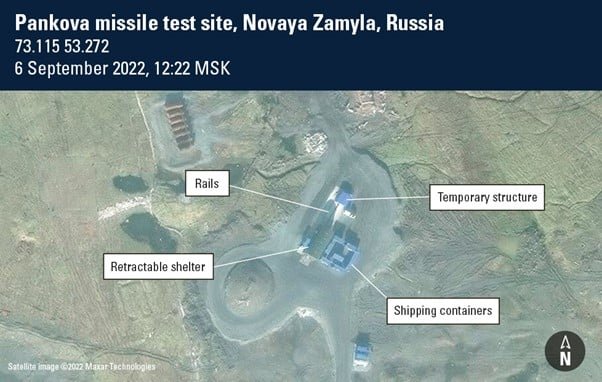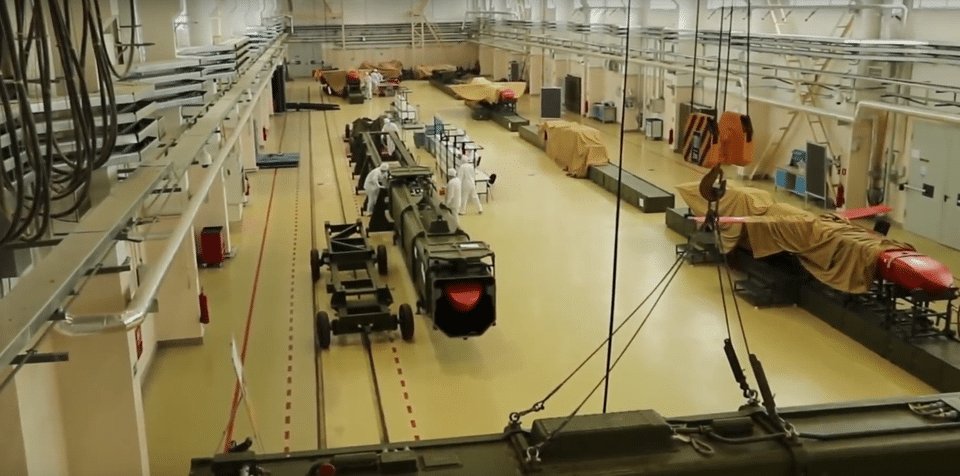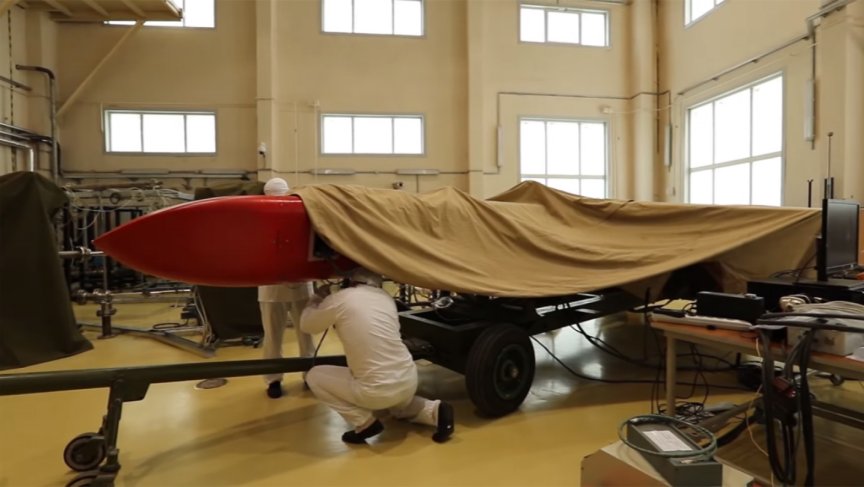Last week, Russian President Vladimir Putin claimed that Russia had successfully tested the 9M730 Burevestnik, an experimental nuclear-powered, nuclear-armed cruise missile that has been in development for years. Need the news alarm members of NATO, or are those conducting the tests the only ones in any real danger?
Presidential pronouncements
Putin first announced a programme to develop a new generation of Russian missiles in his 2018 address to the Federal Assembly, at which he played the gathered deputies of both houses of the Russian parliament footage of a missile launch.
Last Thursday, Putin told delegates to Russia’s Valdai Discussion Club that successful tests of the nuclear-powered Burevestnik missile had been carried out, adding that Russia would soon begin mass production of the new weapons ahead in preparation for their use in active service.
The announcement confirmed a New York Times report that ran a few days earlier saying that Russia was likely preparing to test Burevestnik, or may already have done so.
Satellite images by US Earth imaging company Planet Labs dated 20 September showed a vehicle with a trailer that appeared “to correspond to the dimensions of the Burevestnik missile” next to a launchpad located on the Novaya Zemlya archipelago in the Russian Arctic, one of the two main sites historically used by Russia for nuclear testing.

Satellite images captured of the Novaya Zemlya archipelago on 6 September. Photo: Maxar Technologies
According to a report by US non-profit Nuclear Threat Initiative, Russia conducted at least 17 unsuccessful Burevestnik tests between 2017 and 2019. In late September, independent media outlet Meduza reported comments made by the director of Russia’s leading nuclear energy research institution, Mikhail Kovalchuk, in which he urged Russia to start testing nuclear weapons on Novaya Zemlya in response to “aggressive moves from the West”.
Nuclear engine
While there has been a great deal of speculation surrounding Burevestnik, which translates as storm petrel, a type of seabird, very little has actually been verified, says one Russian military expert who spoke to Novaya-Europe on condition of anonymity.
It’s unclear as yet how exactly Burevestnik functions, although the missile is thought to be equipped with a “ramjet engine which uses reactor-heated air” to propel itself. Burevestnik can either fly for tens of thousands of kilometres at a subsonic speed, or the missile is capable of hypersonic flight, depending on which media reports you read.
What does appear to be established is that Burevestnik is significantly smaller than other intercontinental missiles, the expert said, and as the reactor doesn’t require much fuel to function, the space saved can be used instead for a significantly sized warhead.
As a nuclear-powered missile, Burevestnik should leave a sizable radioactive footprint, which the expert believes will be detectable whenever Burevestnik is launched for testing, noting that radiation reconnaissance aircraft were designed for exactly this purpose.

Photo: video screen
A problem for NATO
Rather than its speed, it’s Burevestnik’s range and the altitude at which it flies that are its key attributes, with some claiming it can travel 20,000 kilometres. While nuclear-armed ballistic missiles can usually be detected fairly easily both during launch and when airborne, a cruise missile that flies low to the ground and can potentially appear from any direction is far trickier to detect.
The Burevestnik project, which began during the Cold War, was eventually mothballed by the Soviet government as its costs spiralled only to be restarted by Putin’s regime.
According to Ukrainian Armed Forces reserve colonel Roman Svitan, Burevestnik could become a problem for NATO if the new missile is successfully tested due to the lack of US anti-missile defence systems covering the entire length of its borders. US air defence was developed with ballistic, not cruise missiles, in mind, while Burevestnik, thanks to the huge distance it can cover, can approach its targets on any trajectory.
Svitan also points out that testing Burevestnik is not prohibited under existing international agreements to which Russia is a signatory, including the Partial Nuclear Test Ban Treaty.
Two-headed seals
Burevestnik’s testing process has been arduous and in some cases, tragic. On 8 August 2019, at least five Russian nuclear specialists were killed during a test launch near the town of Nyonoksa in Russia’s Arkhangelsk region. Many others who were injured in the incident later died of acute radiation sickness. Western analysts believe that a Burevestnik missile exploding was the most likely cause of the tragedy.
“As far as is known, two prototypes fell into the sea, contaminating the water with nuclear fuel. One of them sank off the coast near the city of Severodvinsk. If this continues, two-headed seals will start appearing in Russia. Could be a good choice for the coat of arms,”
Svitan jokes.
Estimates of the total amount spent on Burevestnik to date are in the billions of dollars, according to the Russian military expert, who added that even so, no details of the project or what stage of its development it’s currently at have been made public. From time to time, there’s talk of another round of test launches, he says, but never anything specific.
Svitan considers the logic of mass producing Burevestnik missiles to be flawed, doubting that they will ultimately pose too great a threat to NATO member states, due to their thermal and radiation traces, which makes them easy both to detect and intercept.
According to Svitan, who quips that the Russian government loves anything that includes the word “nuclear”, the main function of Burevestnik is a reputational, to let Russians and the world at large know that the Kremlin has a new nuclear stick at its disposal.
Join us in rebuilding Novaya Gazeta Europe
The Russian government has banned independent media. We were forced to leave our country in order to keep doing our job, telling our readers about what is going on Russia, Ukraine and Europe.
We will continue fighting against warfare and dictatorship. We believe that freedom of speech is the most efficient antidote against tyranny. Support us financially to help us fight for peace and freedom.
By clicking the Support button, you agree to the processing of your personal data.
To cancel a regular donation, please write to [email protected]

